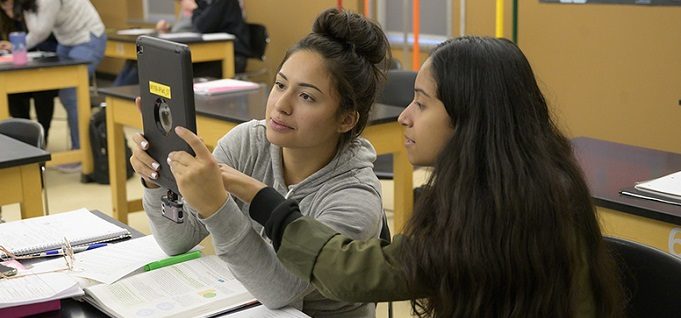Closing the gap for LatinX students
By Ellie Ashford
October 23, 2019
An Illinois college has seen significant improvements in the success of its LatinX students in recent years.
At Elgin Community College (ECC), LatinX students, who comprise 42 percent of the Illinois college’s student population, still lag slightly behind white and Asian students, but they are nearly catching up, says Philip Garber, ECC’s vice president of planning, institutional effectiveness and technology.
The completion rate for LatinX students in the credit-bearing English 101 course, for example, increased from 51 percent to 56 percent between 2013 and 2017, he says. Persistence rates for LatinX students were significantly higher (about 63 percent) than that of African-American students (45 percent) in 2016, which is the most recent data.
LatinX students have also improved in overall completion over the past five years, Garber says. Because LatinX students are more likely to attend part-time, their completion rates are higher if looked at over a longer period – four or five years – rather than the typical three-year period used by the U.S. Education Department, he says.
“It is gratifying to have achieved this collectively with our board, faculty, staff and administrators,” said ECC President David Sam. “Yet, we can never rest on our laurels; we must continue to live our mission and improve student success.”
Tutors, mentors are key
The gains are particularly noteworthy, as less than 30 percent of Hispanic high school graduates are deemed completely college-ready when they enroll at ECC.
It’s hard to pinpoint what the college did to spur this improvement, Garber says, as “everything we do affects all students.”
But one key factor is the extensive free tutoring available at Elgin, including drop-in, appointment-based and online tutoring, as well as tutoring for basic help in lower-level courses through more advanced tutoring for specialized courses like physics and chemistry.
Garber also points to ECC’s efforts to promote an active student life on campus, such as groups focusing on LGBT, African-American and Muslim students, and the LatinX population.
Peer tutoring and mentoring is also a big part of the support provided to Elgin students. Each new student is assigned an upper-level student “who has generally been around the block” to provide academic help and social tutoring, Garber says.
The peer mentors are trained to help new students navigate administration policies, register for classes and improve their study skills, he says.
The mentors and the students they work with also must check in periodically and meet with an advisor. “We’ve institutionalized that here,” Garber says.
In addition, male students of color at ECC, including black and LatinX students, receive professional advising that focuses on career goals through a grant administered by Triton College’s TRIUMPH (Triton Undergraduate Men Pursuing High Education) program.
Accelerated learning
Elgin has adopted an accelerated learning program to speed up students’ progress through developmental education. The college uses multiple measures for placement and combines developmental and college-level English in the same semester. It also combines two developmental math courses into a single six-credit course.
The Accelerating Opportunities (AO) program has led to significant gains in the number of students who earn a degree or certificate, says David Rudden, managing director of institutional research at ECC. That program, established by Jobs for the Future, allows students in adult education and English as second language to integrate basic skills and career and technical education into clear pathways for completion and employment.
“That program is not intentionally geared to LatinX programs, but it contributed quite a bit to their achievement,” Rudden says.
After the one-year program, approximately 88 percent of AO students graduate, compared to one percent of non-AO adult education students and 26 percent of students in career and technical programs not in AO.
Leveraging resources, attitudes
As a member of the Illinois Equity in Attainment Initiative (ILEA), a higher education partnership focused on completion, ECC set a goal of eliminating racial and socioeconomic achievement gaps by 2025. The 29 two- and four-year colleges that joined ILEA share best practices in raising completion rates.
In addition to the direct assistance provided by the college, Rudden attributes the success among LatinX students to their attitudes. Comments from LatinX students on a focus group revealed a common theme.
“They are more motivated because they see more hurdles for themselves, both financial and political,” he says.
While the college doesn’t collect data on students’ immigration status, Rudden notes that the community of Elgin has a large population of undocumented residents. Students see the college as a haven, adds Garber. “Students know we’re a safe place they can go,” he says.
This article originally appeared in CC Daily.


